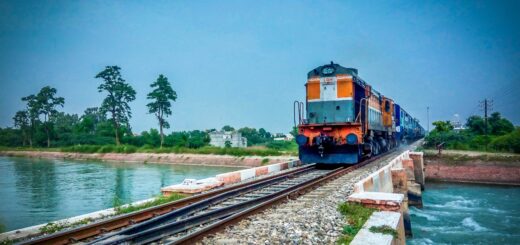Chitradurga: Once a Formidable Fortress; Today, Forgotten and Forlorn
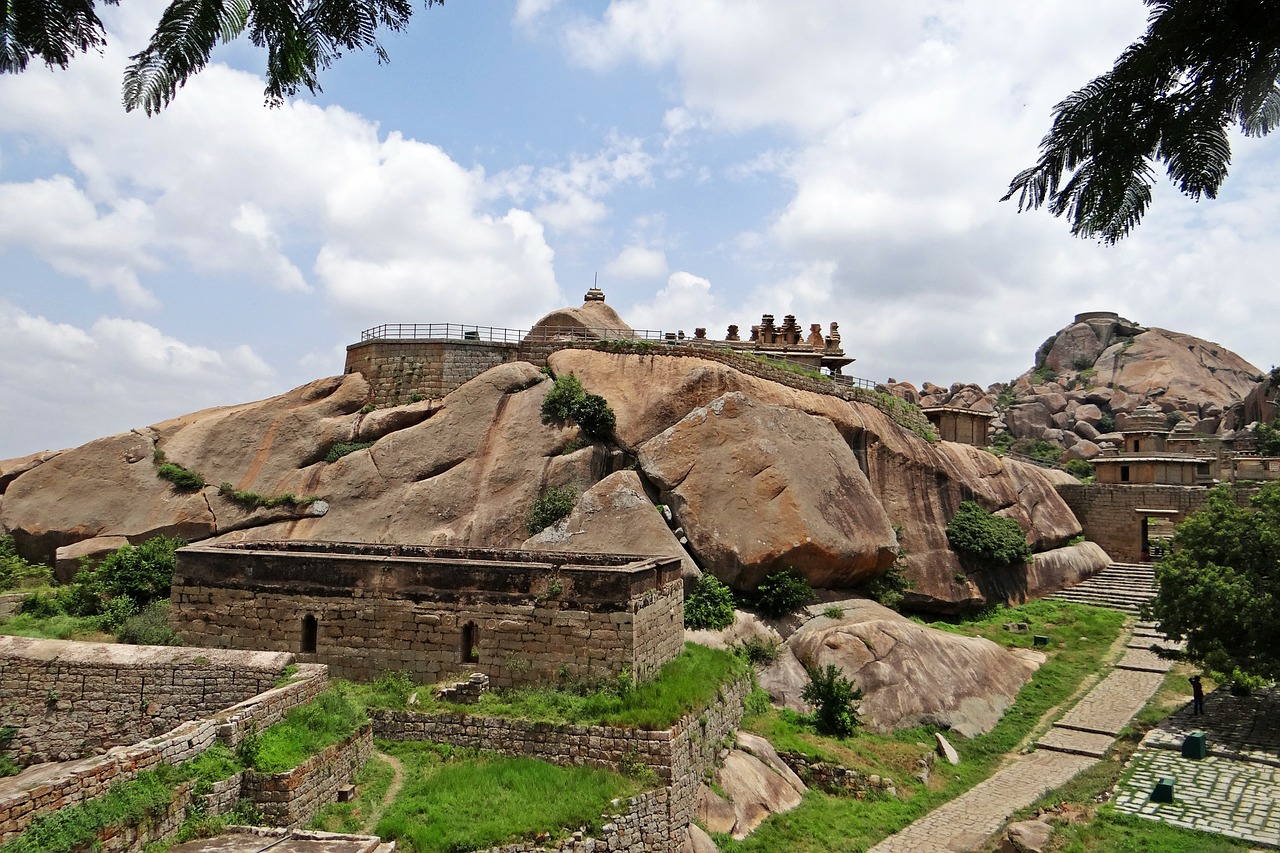
Chitradurga: Once a Formidable Fortress; Today, Forgotten and Forlorn
A chill went through me as I peered into the tiny opening in the massive rock in front of me, as I imagined how an ordinary woman did what she did, standing in that very spot, centuries ago. Standing, silent as a cat, armed with nothing but her wooden pestle that she used to grind flour, waiting as Haider Ali’s soldiers tried to sneak into the fort, one by one in the hot blazing sun. ‘Whack!’ One skull crushing blow – and another one dead! She silently dragged the body and moved it away from the entrance, piling it on top of the others she had dispatched.
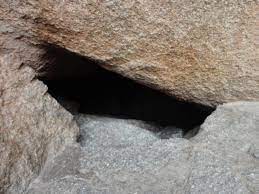
The opening in the hill through which Haider Ali’s soldiers tried to enter
Wondering why his wife, who had gone to fetch water for his lunch, was taking so long, the guard of the watchtower just above the opening, Mudda Hanuma, arrived at the spot. To his horror, shock, and awe, he found his wife Obavva, with a bloodied pestle, or Onake,in her hands, and an impressive body count stacked up behind her. From that day on, she came to be known as ‘Veera Vanithe Onake Obavva’ – the Brave Woman, Obavva with the Pestle.
Her singular act of courage and her ability to think on her toes, saved the rocky yet picturesque fort of Chitradurga from the onslaught of Haider Ali and his forces. It is a tragedy that we Indians are not taught about such bravehearts, true daring daughters of the soil. Woman empowerment was prevalent even in ancient times!
The king Madakari Nayaka was indebted to her and honored her – though we were told she died soon after. The fort was besieged by Haider once more, and he was sent packing yet again; however, he was persistent, and third time lucky: he found an official who sold his soul for a few pieces of gold.
I just closed my eyes and imagined how it must have been, all those years ago, and could feel the goosebumps forming on my skin. The sun was blazing hot on that day too – but Chitradurga’s unique weather means you don’t feel hot, because a cool breeze blows in almost continuously.
Rahul, my husband, and I had taken off to Shimoga on a weekend getaway; we were browsing at places to go. There were a few dams and a couple of forts but all those seemed too far away. So we decided to visit the Mandagadde Bird Sanctuary, just 30 Km away. We visited an 800 year old temple – Lakshmi Narasimha Temple at Bhadravati, about a 15 minute drive from Shimoga town, and were on our way to the sanctuary, when we decided, what the hell, let’s just go to the Chitradurga Fort. Driving was not a problem as traffic was very sparse.
We arrived at the fort in the afternoon; after a light meal at KSTDC Mayura, we bought our tickets and set off. We engaged the services of a guide, because we wanted to hear the entire story and history of the fort.
The fort itself is an impressive structure; sturdy, massive, functional. Built between the 11th and 13th centuries, it has seen the Hoysala, Chalukyas, and Nayaks of Vijayanagar rule over it. It’s constructed in 7 concentric fortified layers – a huge gate closing off each layer from the rest, the entire path is a zigzag. Our guide told us that was to slow down the enemy if they came with elephants. The doors were all pulled off – as it had fallen to Haider Ali in 1779. Thick walls of granite blocks fashioned from the enormous rocks all around the fort, could not be shattered even by cannon balls. Here and there we saw where tiny bits had broken off due to impact, but no major damage was visible.
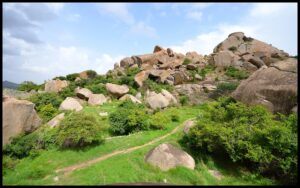
chitradurga terrain
In the first layer, there were two tanks, cut into the rocks. One was a big tank, and was used to store oil brought by the farmers – every couple of days, some of the oil would be transferred into the smaller tank, to be used for lighting torches, and lamps in and around the fort. Next to it was the living quarters for the soldier guarding the oil tanks – a natural opening under another huge rock, bricked up at the far end.
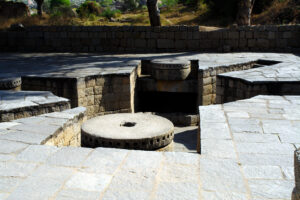
oil tank and gunpowder mill
As we trudged up the steep steps, we were awe-struck by the start beauty of the terrain. Our guide – who clearly loved the fort and his hometown, pointed out rocks that looked like a frog, a crocodile, a boat, and one, when viewed from behind, like an elephant lying down on its side. Just in front of it is a temple dedicated to Lord Ganesh, aptly named ‘Haathi Ganesh’. Our guide – unfortunately we forgot to ask his name – took us through another gate; just behind where the doors would have been, were two ‘seats’ cut into the walls, on either side, just enough for the soldiers to rest their behinds while on guard duty, but not so comfortable that they would fall asleep! Clever King! Most of the gates had another smaller gate to the side, meant for commoners and soldiers. The big gate was opened only during festivals and whenever the royals had to pass through.
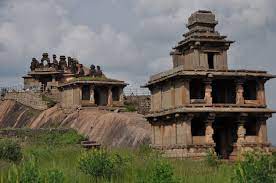
Temples at Chitradurga Fort
Climbing a little further, we were shown the inside of the granary from above – nine silos within strong walls, for storing 9 different types of grains and cereals. All along, our guide pointed out various water reservoirs and tanks; rainwater harvesting structures were built in a cascading design, and they were all interconnected, and in spite of being in an arid region which received sparse rainfall, the fort never faced water shortage.
On entering one of the gates – I think it was the 5th, our guide asked us to stop in the lobby. It was surprisingly cool in there, in spite of the sweltering heat outside. He told us that it was like this, 365 day in the year. What wisdom our ancients had! How they managed this, is still an undeciphered mystery. It seems there existed several secret passages for the King and other important people to escape, should defeat become imminent during a siege.
At the top, we saw the temple dedicated to Hidimba – one of the only 2 or 3 temples in her name. Supposedly a demon princess, she married Bhim after he killed her brother Hidimb. Legend has it that it is in this very place that Hidimb was killed, at the time the Pandavas were roaming the forests during their exile; hence the temple.
A little distance away is a structure called ‘Hawa Mahal’; its only purpose was – to let the King and Queen enjoy the cool breeze during summer. There were no steps from the inside of the structure; we were told that the soldiers would carry the royals in palanquins from the outside steps, lift them, and lower them into the seating place. Royal personages of yore sure knew how to live in style!
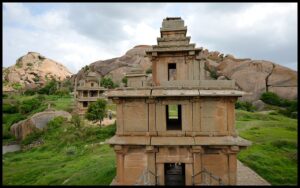
Hawa Mahal
There were numerous temples built by the fort’s erstwhile rulers; sadly, they were destroyed by the rampaging army of Haider Ali, and today, only a few remain, still proud, mute witnesses to the fort’s rocky history.
The fort was also home to a Gurukul where the children of the royal family as well as commoners living in the fort were sent to stay and study under their Guru. That structure is still intact. Close to it is the ‘Sampige Siddheshwara temple’; sampige is the champa flower, and there is an old champa tree next to the temple – hence the name. the temple is live, and daily prayers are conducted there still.
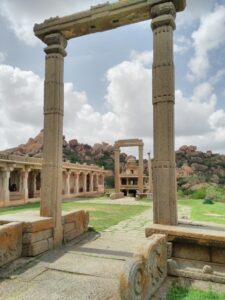
chitradurga fort school
Chitradurga fort is spread over 1500 acres; our guide mentioned that we would need 10 days to cover the entire area! On the path in several places, we also saw many plaques and slates with inscriptions – the script resembled the Kannada language, but not quite the same; we heard that it was not decoded yet. At the topmost wall, there were slots cut into the walls meant for placing rifles from which to fire at the approaching enemy.
Our guide lamented the fact that not many know about this magnificent stone fort, and that there are hardly many visitors – once impregnable, built with such ingenuity; he wished that more people would come to visit and revel in its wonders. And I share his sentiments. The intelligent layout, the rainwater harvesting systems, the granaries, the brilliant defence systems, the thoughtful living arrangements for soldiers – there is so much for us to be proud of in it all. It is a part of our ancient heritage.
If you’re anywhere near Bangalore, it’s not too far away really; if you go to Hampi, you can make a detour for Chitradurga. Trust me, it’s worth it.

